GALLERY
School performance
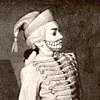
Spartacus
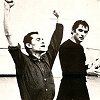
Flames of Paris
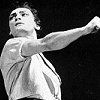
Spartacus
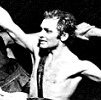
Spartacus

Giselle
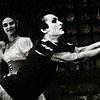
Mikhail Lavrovsky
Mikhail Lavrovsky was in the late 1960s and 1970s one of the Bolshoi Ballet's foremost principal dancers. Although his name is less familiar in the West than that of fellow-dancer Vladimir Vasiliev, his success equalled at some point that of Vasiliev's and both dancers were often admired for their opposite qualities. As much as Vasiliev, Lavrovsky's virile, passionate, often impetuous style contributed to shape male dancing at the Bolshoi for several decades.Mikhail Lavrovsky was born to a family of dancers on 29 October 1941 in Tbilisi, Georgia. His father Leonid Lavrovsky was one of Russia's most remarkable and influential choreographers of the century, while his mother Elena Chikvaidze was a famous Bolshoi ballerina. Mikhail Lavrovsky studied at the Moscow Choreographic School under Olga Khodot and Nikolai Tarassov, the renowned teacher who also discovered and groomed Maris Liepa. Upon graduation in 1961 Lavrovsky joined the Bolshoi Ballet.
At his company's debut in the pas de deux from Diana and Actaeon observers were quick to remark the temperament and the virile, no-nonsense style of his dancing - features that would become characteristic of Lavrovsky's art. In his second season with the Bolshoi he began to prepare his first soloist roles, including the Slave in Jakobson's Spartacus and, more importantly, Philippe in The Flames of Paris, which he rehearsed with the great Alexei Ermolaev, the Bolshoi's creator of the role.
Under the guidance of Ermolaev and both his parents, Mikhail Lavrovsky rapidly rose to the top of the Bolshoi Ballet. In the first seven years with the Bolshoi, he was cast in a number of the great classical roles (the Prince in Cinderella, Albrecht in Giselle, Vaslav in The Fountain of Bakhchisarai, Frondoso in Laurencia, Romeo), which were often thought out anew and always underscored by Lavrovsky's emotional strength and his ever-continuing search for technical perfection.
The arrival of Yuri Grigorovich at the Bolshoi in 1964 was in this respect of the greatest significance for Lavrovsky's career. Grigorovich's ballets provided Lavrovsky the personae with whom he identified most: the Prince in The Nutcracker, Ferkhad in The Legend of Love, but above all the title role in Spartacus, which many consider Lavrovsky's greatest achievement and which earned him the Lenin prize, hardly 29 years old.
Mikhail Lavrovsky partnered several of the leading Bolshoi ballerinas, but it was with Natalia Bessmertnova that he created a special rapport. Their performances in Giselle and Romeo and Juliet have been preserved on film.
From 1977 Lavrovsky appeared as principal dancer and guest choreographer with the Tbilisi Ballet, briefly becoming artistic director of the Paliashvili Theatre, home to the Tbilisi Ballet from 1983-1985. In 1980 he also graduated as ballet master from the Choreography Department of the State Institute of Theatrical Art (GITIS, class of R. Zakharov). Lavrovsky remained a dancer with the Bolshoi Ballet until 1988.
Mikhail Lavrovsky is a recipient of the First Prize at the 1st International Ballet Competition at Varna in 1965. In 1970 he was a warded the Lenin Prize for his performance as Spartacus and became a People's Artist of the USSR in 1976. In 1977 he received the State Prize of the USSR. From the hands of Serge Lifar Lavrovsky also received the Nijinsky Prize in Paris in 1972, for his role of Albrecht in Giselle. In 2001 he was awarded the "Soul of the Dance" from the Ballet Magazine. Mikhail Lavrovsky is currently a ballet master-repetiteur at the Bolshoi Theatre.
website (in Russian): www.lavrovsky.com
Marc Haegeman
His repertoire included
With the Bolshoi Ballet, Moscow- Georgi (cr) in Pages of Life(L. Lavrovsky) (1961)
- Philippe in Flames of Paris (Vainonen) (1962)
- Prince in Cinderella (Zakharov) (1963)
- Albrecht in Giselle (Petipa after Coralli, Perrot, staging L. Lavrovsky) (1963)
- Blue bird in The Sleeping Beauty (Grigorovich after Petipa) (1963)
- Vaslav in The Fountain of Bakhchisarai (Zakharov) (1963)
- Frondosio in Laurencia (Chabukiani)(1964)
- Basil in Don Quixote (Gorsky after Petipa) (1965)
- Kais in Leili and Mejnun (Goleizovsky) (1965)
- Romeo in Romeo and Juliet (L. Lavrovsky) (1965)
- Ferkhad in Legend of Love (Grigorovich) (1965)
- Siegfried in Swan Lake (Gorsky, Messerer)
- Prince in The Nutcracker (Grigorovich) (1966)
- title role in Spartacus (Grigorovich) (1968)
- Romeo (cr) in Romeo and Juliet (Ryzhenko, Smirnov-Golovanov) (1968) (film)
- soloist in White Nights (1972)
- Viktor (cr) in Angara (Grigorovich) (1976)
- title role in Ivan The Terrible (Grigorovich) (1978)
- Artinov (cr) in Aniuta (Vasiliev) (1986)
Choreographic work
- soloist in Mziri (Tbilisi Ballet, 1977) (TV-film)
- soloist in Prometheus (Tbilisi Ballet, 1981) (TV-film)
- Porgy in Porgy and Bess (Tbilisi Ballet, 1983)
- soloist in Choreographic Novel (Tbilisi Ballet, 1986; Ballet Arizona, 1987)
- Bach Suite Nr. 2 for Flute (Ballet Arizona, 1987)
- Fantasy on the Theme of Casanova (Atlanta Ballet, Atlanta, Georgia, 1987; Bolshoi Ballet, 1993)
- soloist in The Dreamer (Tbilisi Ballet, 1989)
- Revelations (Citizens Company, Moscow, 1991)
- Jazz Café (Moscow Operetta Theatre, 1992)
- More powerful than Gold and Death (Moscow Chamber Ballet, 1996)
- Giselle (staging of Leonid Lavrovsky) (Moscow Chamber Ballet)
- Richard III (Moscow, 2000)
- Diaghilev in Nijinsky (Maly Theatre; Bolshoi Theatre, Moscow, 2000)
- Matador (Bolshoi Ballet, 2001)
Copyright © 2003
Text of Mikhail Lavrovsky Copyright © 2003 Marc Haegeman. All rights reserved.